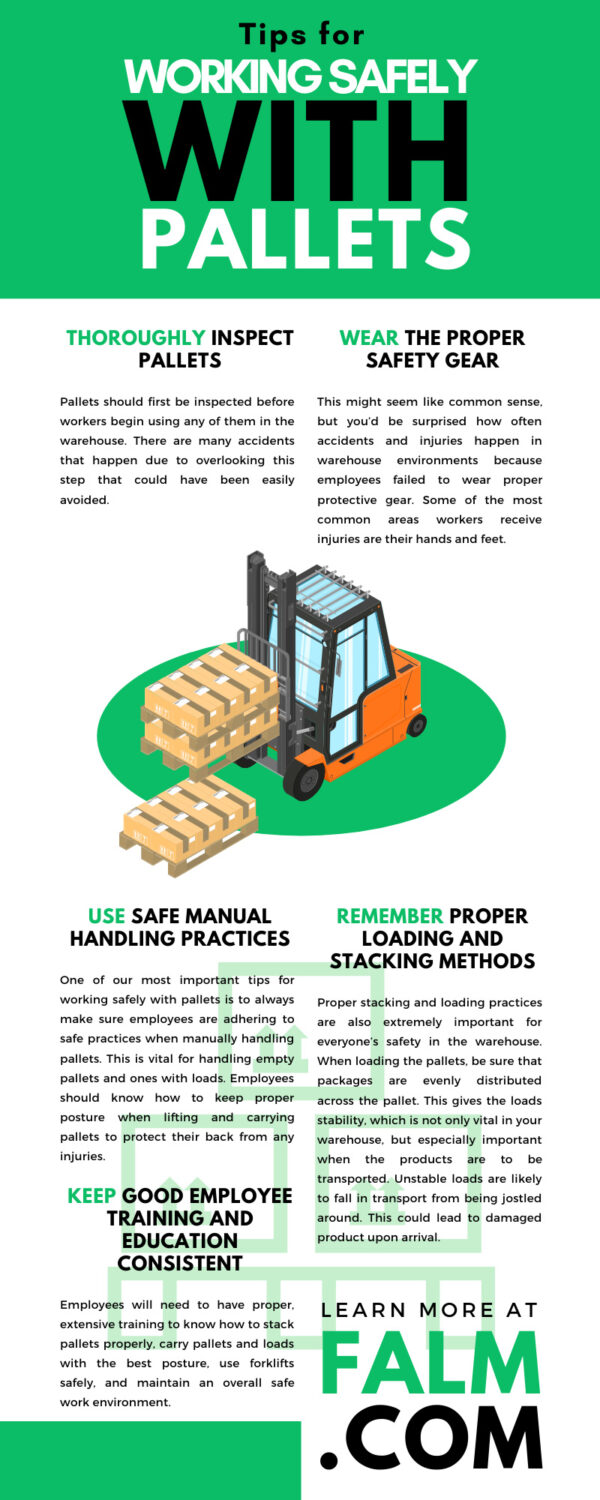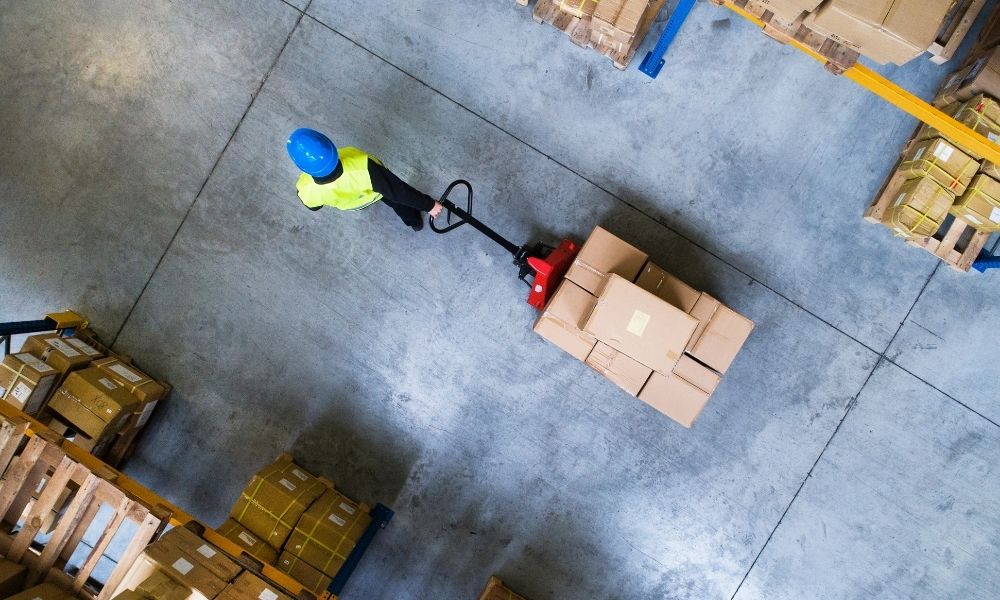Warehouses can be full of a variety of different hazards that you will need to be aware of. One of the most common facets of warehouse operations where safety needs to be a constant priority is wooden pallet use. Pallets are used all the time in warehouse settings. They make the storing, loading, and transport of products more practical throughout the industry. This means you also need to be constantly aware of the dangers they present, too. Learn some tips for working safely with pallets by reading below.
Thoroughly Inspect Pallets
Pallets should first be inspected before workers begin using any of them in the warehouse. There are many accidents that happen due to overlooking this step that could have been easily avoided. One of the most serious examples of these accidents on the job is heavy loads falling on employees. This can happen whether you’re handling pallet loads by hand or using a forklift. The best prevention is to check that each pallet is in good enough shape for holding the product.
Loose boards are a major cause of pallet instability. Wooden pallets themselves are made from several boards, and any of these can start to loosen or pull free from the blocks they’re connected to. Broken boards are also common issues you will find with wooden pallets. They tend to break during handling, which creates serious danger for employees. This also leads to splintering which is harmful or can get caught in machinery. Protruding nails are one more issue to check your wooden pallets for. Nails can loosen and work free from boards over time as the board flexes and as moisture causes the wood to shrink and swell. Once this is done, all of your good pallets are ready for use.
Wear the Proper Safety Gear
This might seem like common sense, but you’d be surprised how often accidents and injuries happen in warehouse environments because employees failed to wear proper protective gear. Some of the most common areas workers receive injuries are their hands and feet. Basic equipment like work gloves and steel-toe boots can go a long way in preventing the most common workplace accidents. There are different types of gloves designed to protect your hands from scrapes, lacerations, and punctures. Some models are designed with cut-resistant cloth fibers, and then there are gloves with thick rubber palms and fingers to help your grip, as well as to prevent the same kinds of injuries. These gloves not only protect employees, but also allow them to work quicker.
While there are a variety of work boots on the market, some are better than others. The best boots to wear are ones designed to withstand heavy objects, such as steel-toe boots. Pallets could fall or get dropped on your foot, as well as the loads they’re carrying. Steel-toe boots are also made to protect you from punctures you could suffer from nails and splinters.
Use Safe Manual Handling Practices
One of our most important tips for working safely with pallets is to always make sure employees are adhering to safe practices when manually handling pallets. This is vital for handling empty pallets and ones with loads. Employees should know how to keep proper posture when lifting and carrying pallets to protect their back from any injuries. Never allow them to throw or drop any pallets. This will lead to damage and weakening of the pallet, but worst of all, it could seriously injure anyone who happens to walk by or within range of it.
Another important practice for your employees to remain aware of is when a job requires more than one person. Anyone trying to handle a pallet load or trying to move a stack of empty pallets is potentially putting themselves at risk when doing it alone. If it looks like they might not be able to handle it by themselves, they should immediately grab extra hands. It’s safer to have too much help than not enough.
Remember Proper Loading and Stacking Methods
Proper stacking and loading practices are also extremely important for everyone’s safety in the warehouse. When loading the pallets, be sure that packages are evenly distributed across the pallet. This gives the loads stability, which is not only vital in your warehouse, but especially important when the products are to be transported. Unstable loads are likely to fall in transport from being jostled around. This could lead to damaged products upon arrival.
Unstable loads could also fall when they are being unloaded at their destination. Package stacks should be completely flat and reach four feet at the highest. When stacking your unused pallets, you need to make sure they’re always on a flat surface. Keep the pallets stacked evenly and flush at the sides. Any edges sticking out make the stack more unstable and increase the risk of them falling. Another detail to remember is to keep pallet stacks eight feet apart from each other and away from other flammable items. If they were to catch fire, the space between them will prevent a fire from spreading as fast.
Keep Good Employee Training and Education Consistent
After looking at every previous method for working with pallets safely, it’s important to acknowledge employee training and education. Employees will need to have proper, extensive training to know how to stack pallets properly, carry pallets and loads with the best posture, use forklifts safely, and maintain an overall safe work environment. Do not skip at all on the amount of time allotted for each employee’s training. You want every worker to be on the same page as to keeping all safety practices consistent. Use your employees’ training as an opportunity to promote safety culture. When everyone in the warehouse constantly has safety on their mind, they are more likely to be vigilant and encourage each other to stay alert.
A wood pallet pickup service can help make your warehouse operations safer. Here at First Alliance Logistics Management, you will find services to come pick up your broken pallets to be taken for refurbishing or recycling.


